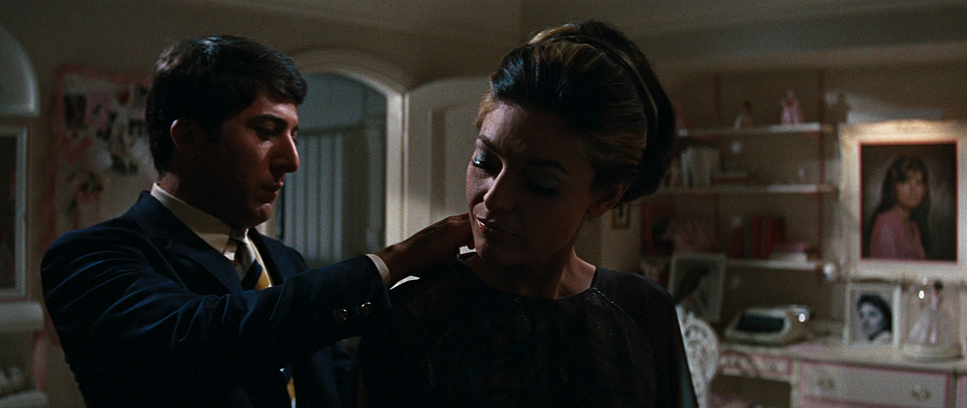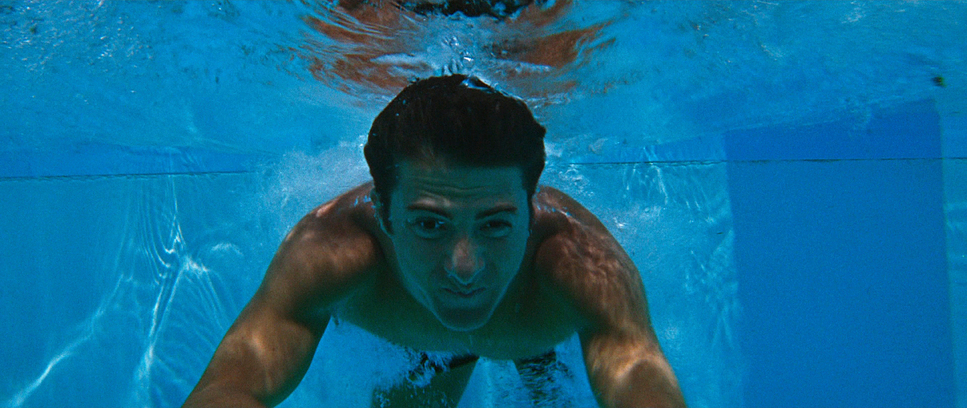I am Salik Waquas, a filmmaker and full-time colorist, owning a post-production color grading suite. My passion lies in exploring how visual storytelling shapes cinematic narratives. Writing about films like The Graduate which is directed by Mike Nichols allows me to analyze the artistic decisions that make them timeless. As someone deeply invested in the nuances of cinematography, I aim to bridge the technical aspects of filmmaking with its emotional and narrative resonance.
Cinematography Analysis Of The Graduate
About the Cinematographer

Robert Surtees, the cinematographer behind The Graduate, was a master of visual storytelling long before the film’s release. Known for his ability to adapt his style to different narratives, Surtees embraced bold experimentation in this collaboration with director Mike Nichols. His work in The Graduate exemplifies how cinematography can transcend mere visual support, becoming a character that deepens the story’s themes. Surtees’ use of innovative framing, lighting, and lensing brought a rich, introspective quality to the film, enhancing its narrative complexity. To me, his work here stands as a masterclass in integrating technical expertise with emotional storytelling.
Inspiration for the Cinematography of The Graduate

The visual style of The Graduate reflects the sociopolitical and cultural shifts of the 1960s. This era of rebellion and questioning traditional values is echoed in the film’s offbeat compositions and visual motifs. Director Mike Nichols and Robert Surtees drew inspiration from the French New Wave, a movement characterized by experimental techniques and narrative subversion.
Surtees and Nichols incorporated lingering shots and negative space to convey Benjamin Braddock’s isolation and alienation. One of the recurring motifs in the film is water, symbolizing Benjamin’s emotional stagnation and sense of entrapment. For instance, the iconic pool sequences underscore his inability to break free from societal expectations. This blend of cultural commentary and innovative visual storytelling creates a deeply immersive experience.
Camera Movements in The Graduate

Camera movement in The Graduate is a narrative tool that vividly captures Benjamin’s psychological journey. Early on, the film employs static shots and slow zooms, emphasizing his paralysis and anxiety. Take the opening scene at the airport: the slow zoom on Benjamin, framed against a moving walkway, subtly reflects his sense of being trapped in an automated, lifeless routine.
Dynamic handheld shots appear in moments of heightened discomfort, such as the party scene where Benjamin feels scrutinized by his parents’ friends. These movements evoke a sense of claustrophobia and unease, pulling the audience into his turmoil. The dolly zoom in the scuba diving scene, where Benjamin descends into the pool, is another standout example. This single movement encapsulates his detachment and despair, visually amplifying his inner conflict.
Compositions in The Graduate

The compositions in The Graduate are meticulously designed to convey themes of isolation and rebellion. Benjamin is often framed within confined spaces—doorways, windows, or the bottom of the pool—visually representing his entrapment. One of the most iconic shots is through Mrs. Robinson’s bent leg, where Benjamin appears trapped within her frame, symbolizing his entanglement in her world.
What I find fascinating is the deliberate use of negative space. By positioning Benjamin against large, empty backdrops, the film emphasizes his insignificance and emotional disconnection. However, this visual language evolves; in the climactic bus scene, Benjamin and Elaine are framed together in a more balanced composition, signifying their defiance and unity. This shift in framing subtly reflects their journey toward independence, though it’s tinged with ambiguity.
Lighting Style in The Graduate

Lighting plays a crucial role in setting the emotional tone of The Graduate. The interplay of shadows and naturalistic lighting mirrors Benjamin’s internal struggles. Scenes with Mrs. Robinson are often bathed in low-key lighting, creating an atmosphere of secrecy and moral ambiguity. Her character is visually defined by shadows, reflecting both her predatory allure and her vulnerability.
Conversely, Elaine is introduced in soft, even lighting, symbolizing hope and purity. This contrast between characters is intentional, guiding the audience through Benjamin’s emotional oscillation. For me, the nuanced lighting choices enrich the storytelling, adding layers of subtext to each interaction.
Lensing and Blocking in The Graduate

The lensing choices in The Graduate are as much a part of its narrative as the script itself. Robert Surtees utilized long lenses to compress space, making Benjamin appear trapped within his environment. This technique is most evident during Benjamin’s desperate sprint toward Elaine’s wedding, where the long lens creates a visual illusion of futility, intensifying the scene’s emotional weight.
Blocking is equally integral, reinforcing character dynamics. Mrs. Robinson often dominates the frame during her encounters with Benjamin, asserting her control. In contrast, scenes with Elaine place the characters on equal footing, visually hinting at the possibility of genuine connection. This attention to spatial relationships adds depth to the storytelling, making each interaction more compelling.
Color Grading in The Graduate

Though predating modern digital techniques, the color palette of The Graduate is a testament to the power of intentional grading. The film’s earthy tones reflect Benjamin’s stagnation and disillusionment. Mrs. Robinson’s world is dominated by rich, warm hues—golden browns that signify her materialism and emotional emptiness.
Elaine’s introduction brings a shift to lighter, cooler tones, visually signaling hope and clarity. This subtle differentiation helps to guide the audience’s perception of each relationship and its emotional stakes. As a colorist, I find the restrained yet purposeful use of color grading in The Graduate particularly inspiring, proving that less can indeed be more.
Technical Aspects of The Graduate
Technically, The Graduate pushed boundaries with its innovative use of equipment and techniques. Shot on Arriflex 35mm cameras with Kodachrome film stock, the visuals achieved a fine balance between sharpness and warmth. The telephoto lenses used throughout the film contributed to the compressed, intimate feel, enhancing the themes of entrapment and alienation.
The editing, too, deserves mention. Match dissolves and rapid cuts blur the lines between Benjamin’s reality and his inner world, creating a dreamlike quality. The seamless integration of Simon & Garfunkel’s soundtrack—songs like The Sound of Silence—amplifies this effect, marrying sound and visuals to evoke profound emotional resonance.